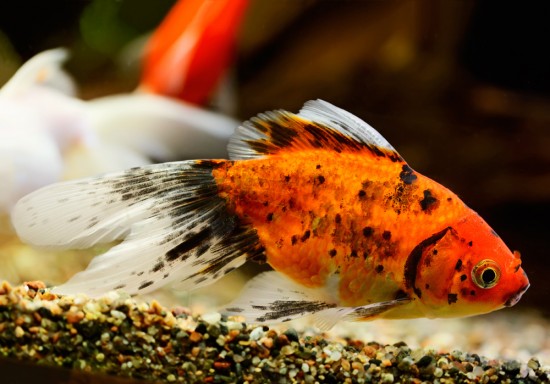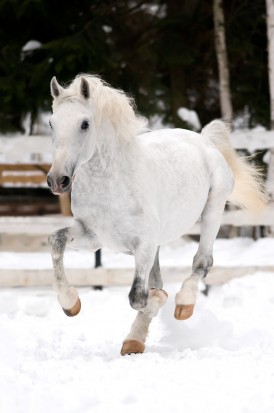
Well, now that spring is finally raising its head up out of the depths of winter, thrush is raising its ugly head as well. You know, that smelly, black stuff you find in the frog of your horse's feet. Yuck!
So, just what is thrush, and what steps do you need to take to prevent your horse from getting it? If your horse does end up with it, what steps do you need to take to get rid of it?
What Is Thrush? First, let's try to clear up just what thrush is. It is thought to be one of two things; a fungus or bacteria. Most experts believe that thrush lives - or persists - in the soil. There also exists a theory that thrush dwells within the horse. In any case, thrush persists in damp areas void of oxygen. Where your horse is concerned, that place is up inside the hoof where wet or damp dirt (mud) and manure are packed up into the frog.
What Does Thrush Look Like? Thrush has a definite foul odor. It has a black, mildew-like appearance. When your horse has thrush, you will see it when cleaning out your horse's hooves and particularly in the frog area. You may also - depending on how advanced it is - see powdery or dusty bits of the hoof come off as you scrap. Your horse may flinch a bit as you do this.
How Does Thrush Affect My Horse? Thrush is actually quite common an occurrence in horses and is nothing to be alarmed about as long as it is treated right away, and as long as you take preventative steps to lessen the chances of your horse getting it. When NOT treated thrush can become very painful for a horse, making their feet sensitive. Thrush actually breaks down the hoof. If left untreated for an extended period of time thrush can cause lameness and even permanent damage to the hoof. You don't want this to occur. A horse's feet and legs are valuable not only to you as a rider, but to the horse for his/her very well-being. Whenever you discover it in your horse, get rid of thrush as soon as possible. Do NOT leave thrush untreated.
What to Do For Thrush. As long as it's not too advanced, there are home remedies for thrush you can use.
How Do I Prevent Thrush In My Horse? While getting rid of thrush can be relatively easy in most cases, prevention is key. Because thrush thrives in wet, damp weather; such as what most of us experience in the spring; make sure you take steps to ensure your horse's pasture, stall and run-in shed are as clean of manure and as dry as possible. Clean stalls and run-in sheds at least once a day to keep them clean and dry. Make sure your horse has a dry place to stand while eating and is not standing in water and mud for long periods of time. Much of my spring pasture is nothing but a mud hole in the spring. Because of this I take flakes of hay and place them in the few dry areas I have so that my horses can graze on dryer ground. Remove or spread out areas of high manure concentration as soon as you can drive a tractor across your pasture. Manure holds moisture and will be prone to thrush. Clean and thereby examine your horses feet at least once a day so that you will be able to spot and treat thrush right away if you do spot it. Cleaning on a regular basis also keeps thrush at bay, allowing oxygen to get to the inner areas of the hoof.
Final Note. In discussing thrush I hope I have not convinced anyone to leave your horse in a stable for long periods of time to avoid the wet muddy spring. While that will perhaps keep your horse from developing thrush it will not be good for his/her overall health. Horses are amazing, many-faceted animals. Now that you know what to do for thrush, be sure to take steps to keep your horse's feet dry but also allow him/her to be a horse. Like you, your horse will be eager to get outside and enjoy the welcoming warmer weather!
 Importance of Collars and Harnesses
Importance of Collars and Harnesses
Mutts ador
Importance of Collars and Harnesses
Importance of Collars and Harnesses
Mutts ador
 Pug - The Dignified Clown Dog
Pug - The Dignified Clown Dog
Pugs are small b
Pug - The Dignified Clown Dog
Pug - The Dignified Clown Dog
Pugs are small b
 Ultra-typing Or Over-typing In Cats And Dogs
Ultra-typing Or O
Ultra-typing Or Over-typing In Cats And Dogs
Ultra-typing Or O
 Bacterial Ulcers In Fish
Bacterial Ulcers
Bacterial Ulcers In Fish
Bacterial Ulcers
 The History Of The Lipizzan – An Aristocratic Ancient Breed Of Horse
The History Of Th
The History Of The Lipizzan – An Aristocratic Ancient Breed Of Horse
The History Of Th
Copyright © 2005-2016 Pet Information All Rights Reserved
Contact us: www162date@outlook.com